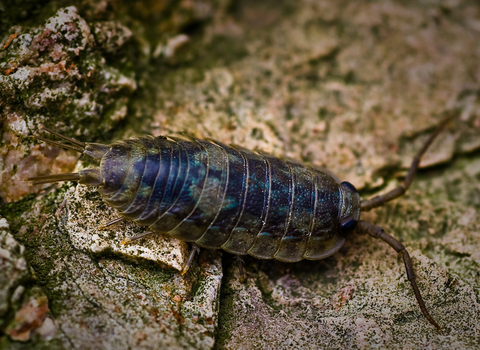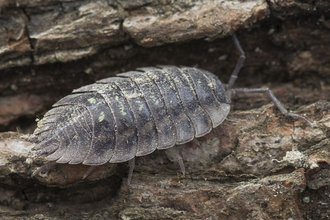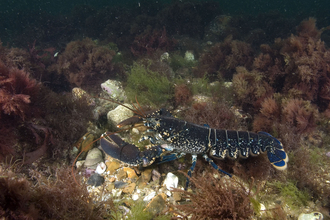
Sea Slater ©Mark Robinson
Sea slater
These little critters are related to the woodlice you find in your garden and play a very important role on rocky shores.
Scientific name
Ligia oceanicaWhen to see
January to DecemberSpecies information
Category
Statistics
Length: up to 3cm Average Lifespan: 2.5 yearsConservation status
Common
About
The sea slater is a type of crustacean, closely related to the woodlouse. Also known as the sea roach, they live on rocky shores all around the UK. They hide away in crevices and under rocks during the day and come out at night to feed.Like the terrestrial woodlouse, they play an important role in the ecosystem. They are detritivores and munch on decaying material like seaweed; this helps break it down and increase the surface area for decomposition by bacteria and fungi. The best time to look for sea slaters is late in the evening or at night, when they leave their hidey-holes in search of food.
How to identify
Turn over rocks on the seashore and this is the woodlouse-like creature you may find. Up to 3cm long, it has a grey oval, segmented and flattened body with long antennae and lots of legs - just like its well-known terrestrial relative. It also has very large, black eyes.Distribution
Found around all UK coasts.Did you know?
Sea slaters have gills - but don't live underwater! That's why you find them in damp environments, like in crevices or under rocks.How people can help
Take part in a beach clean to remove strandline litter by hand. This has a much lower impact than mechanical beach cleaning. If organising a beach clean, encourage participants to leave natural debris on the beach - including decaying/dry seaweed. It is an important part of the ecosystem! If possible, remove the litter from the seaweed (we know it's tough when it's all tangled up!) and leave the seaweed on the beach.When rockpooling, be careful to leave everything as you found it - replace any rocks you turn over, put back any crabs or fish and ensure not to scrape anything off its rocky home.




